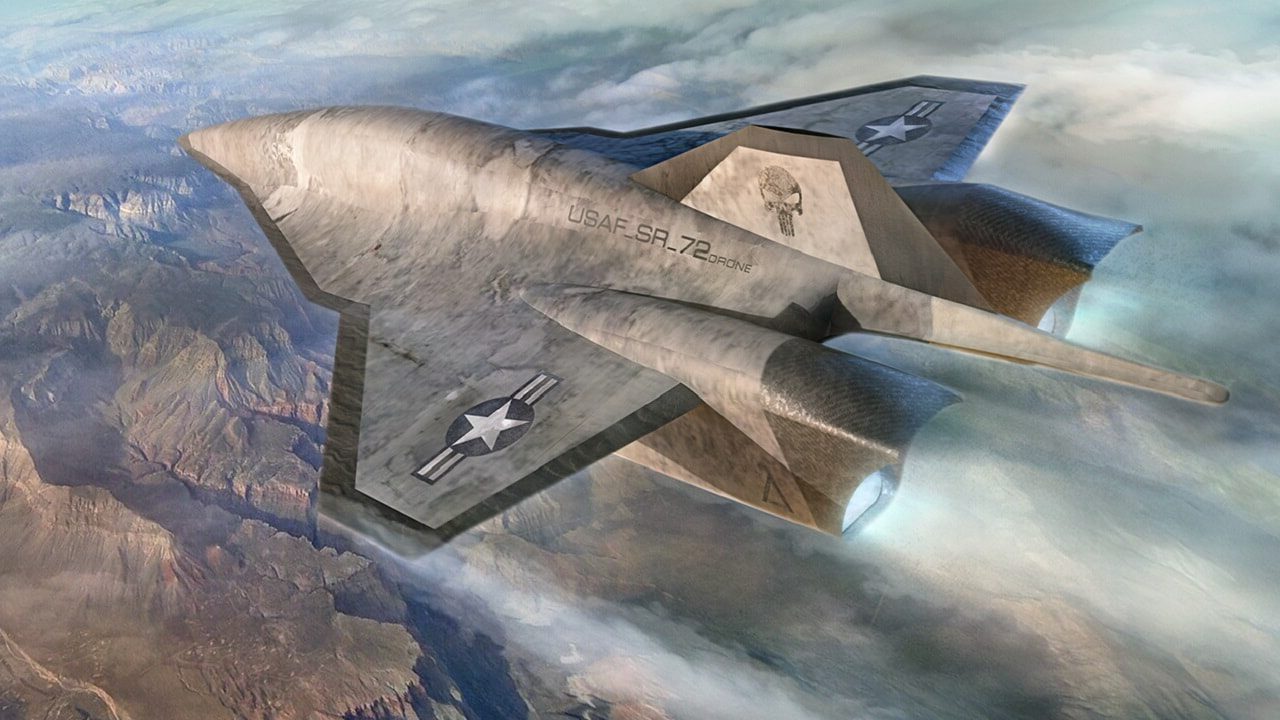For aviation buffs (you know who you are), the star of Top Gun: Maverick wasn’t Tom Cruise but instead was the aircraft that the one-time Hollywood heartthrob was seen “flying.” It is unclear in fact, if it was Cruise or the planes that helped make the film the box office smash of the summer – closing in on $1.3 billion at the worldwide box office, becoming the first billion-dollar movie in Cruise’s 40-year career.
Yet, there has been some criticism that Cruise’s character Lt. Pete “Maverick” Mitchell, didn’t get to pilot the Lockheed Martin F-35 Lightning II – and the fifth-generation jet only had a few seconds of screen time. Production delays and then the release of the film due to the Covid-19 pandemic played a role, but there were other reasons at play.
However, while Maverick didn’t get to fly the Lightning II, he was seen at the controls of a secret plane that looked much like the SR-72 “Darkstar.”
The hypersonic jet seen on the big screen was a very detailed mock-up that was built with some key insight from Lockheed Martin’s Skunk Works, the not-so-secret department at the defense contractor’s aerospace wing responsible for developing such secretive aircraft. However, that movie prop was so convincing-looking that the film’s producer Jerry Bruckheimer said that the Chinese government had even re-tasked a satellite to get a better look.
“The Navy told us that a Chinese satellite turned and headed on a different route to photograph that plane. They thought it was real,” Bruckheimer explained. “That’s how real it looks.”
According to Deadline.com, the Darkstar prop aircraft was filmed inside and outside a hangar at China Lake, including VFX plate shots and drone shots of the hypersonic clone rolling onto the tarmac.
SR-72: Son of the Blackbird – A Bomber?
Lockheed Martin has been working on the very real SR-72 since 2013 and confirmed that it had conducted engine tests in 2017. Few other details had been officially released, and there were rumors the project may have been canceled.
Then in 2019 the first trailer for Top Gun: Maverick was released and it featured a glimpse at the aircraft that has been dubbed “Son of the Blackbird” – a reference to the Lockheed SR-71 “Blackbird” reconnaissance aircraft.
What is notable about the SR-72 is that it could be operational by 2030. Some aviation experts have suggested it could be more than a spy plane – and could actually be a hypersonic bomber. It is expected to reach speeds of Mach 6, and likely wouldn’t need a pilot like Maverick at the controls, as it will likely be an unmanned autonomous aircraft.
However, transforming the high-speed aircraft into a bomber would present more than a few challenges. As previously reported, taking spy photos or dropping bombs at Mach 6 would require extraordinary engineering. Moreover, it would require hundreds of miles to make a turn, and it will need powerful guidance computers to line up targets, 80,000 feet below. Opening a bomb bay at 4,000 miles per hour isn’t easy, so that will need to be addressed.
Yet, as the race to develop hypersonic weapons continues, the SR-72 Darkstar will likely be a part of it. We’ll have to wait and see if any real-world Top Guns get to fly it.
Video: SR-72 (Darkstar) Mockup From Top Gun: Maverick – Son of SR-71 in real life
A Senior Editor for 1945, Peter Suciu is a Michigan-based writer who has contributed to more than four dozen magazines, newspapers and websites. He regularly writes about military hardware, firearms history, cybersecurity and international affairs. Peter is also a Contributing Writer for Forbes. You can follow him on Twitter: @PeterSuciu.

